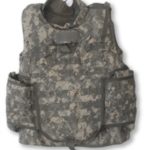Something was missing: the brief on behalf of a creditor with a lien argued vigorously that the lien couldn’t be stripped in a Chapter 13 in which no discharge was available. Silence as to the other side of the argument.
The one sided brief resulted in not only a loss on the client’s issue, but a stripe of skin off the law firm’s symbolic back for an attempt to mislead the judge.
Worse, the firm’s response to the OSC was an attempt to throw the young associate involved under the judicial bus.
Only half the law
The troublesome brief in opposition to the lien strip, which triggered the OSC, cited only cases disallowing a lien strip when no discharge was available; no mention was made of authority on the other side of the question. Judge Jellen rejected the defense that the firm could rely on the judge knowing the other side of the argument in light of his published decision on the issue.
The one-sided presentation of the case law violated the firm’s duty not to mislead the judge or opposing counsel as to the law or the facts, citing California statutory law and the ABA Model Rules of Prof’l Conduct R. 4.1.
Hiding behind the newbie
At oral argument on the OSC, creditor’s counsel argued that the offending brief was drafted by an inexperienced associate who was simply over enthusiastic in support of the client’s interest. Not so, held the judge. The brief was signed by a name partner in the firm, and argued by another well experienced attorney; Rule 9011 applies to all attorneys involved in “signing, filing, submitting, or later advocating” the offending representations.
The …firm is, at best, guilty of extreme sloppiness in its presentation to the court, compounded by its effort to place primary blame on a young associate whose misconduct was no more serious than that of his two more-experienced colleagues…At worst, the…firm has violated its ethical duties.
The take away
Nothing about this episode is confined to the representation of creditors. The duty to reference conflicting authority applies to us all.
My mental template when writing motions is to image myself as the judge’s law clerk, free to advocate for what I see as the better legal position, but obligated to the court to acknowledge and explore cases on the other side of the question.
The reprimand discussed here is found in ND CA Case No. 11-41332, entered /28/2011.
Image courtesy of Aldebaran.








